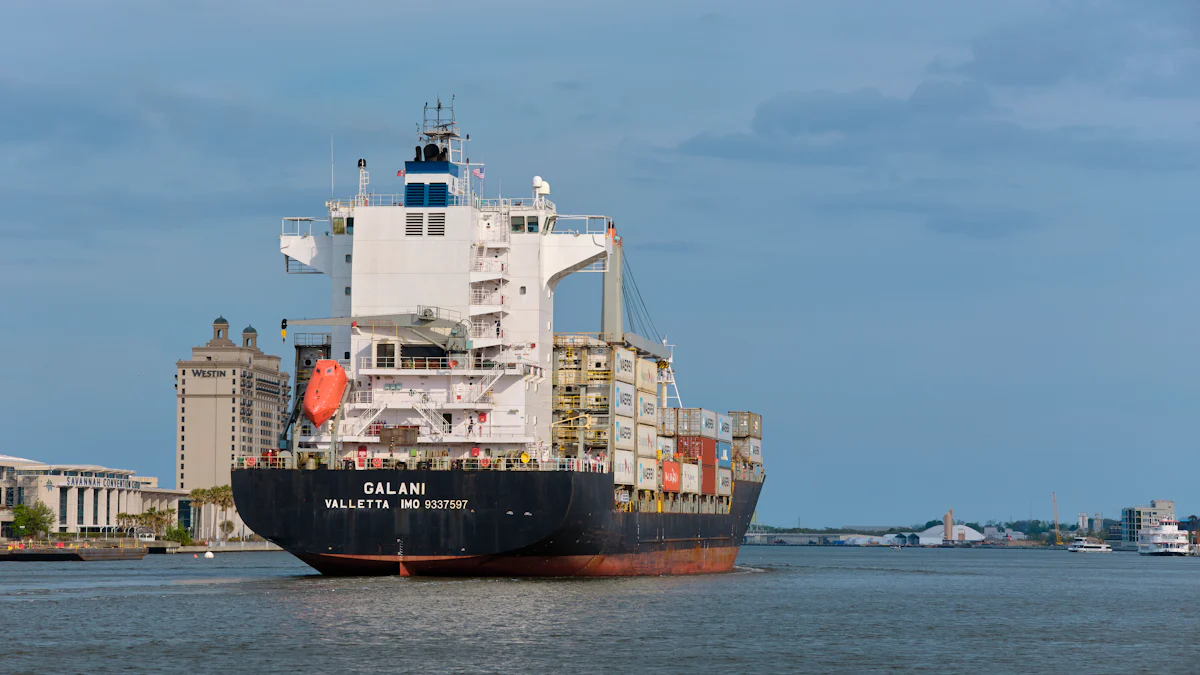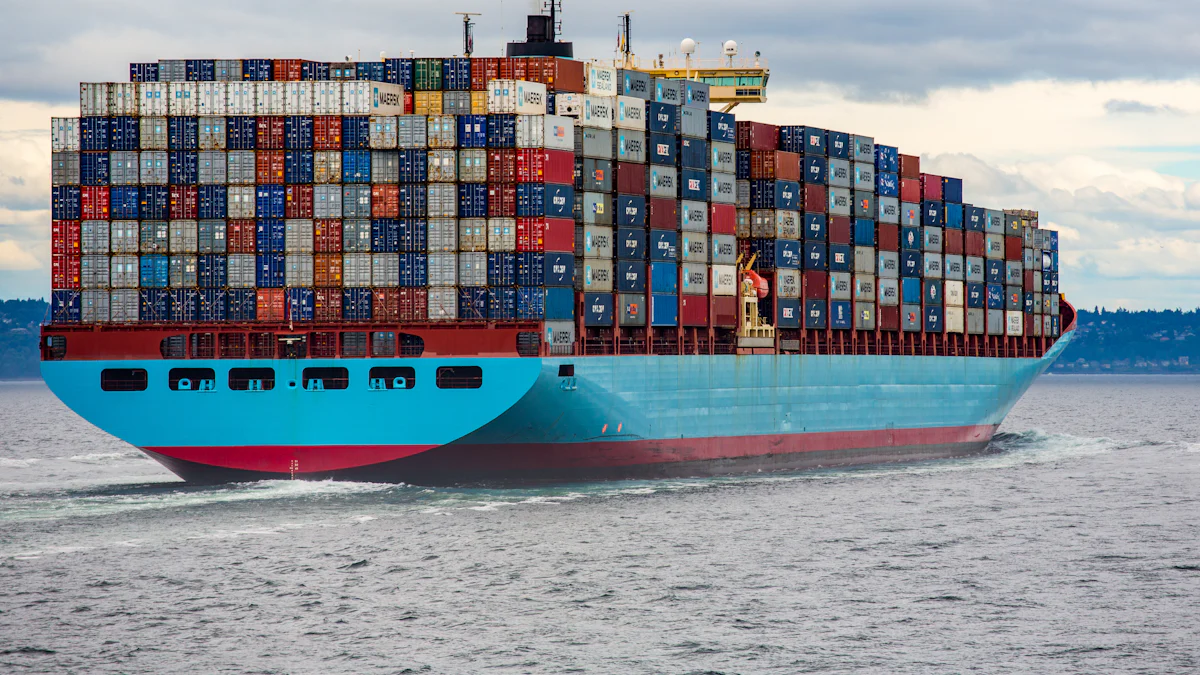Ocean Freight Market Dynamics: Key Trends to Watch

Ocean Freight Market Dynamics play a crucial role in global trade. Understanding key trends in this industry is essential for businesses to navigate challenges and seize opportunities. Market dynamics influence shipping costs, transit times, and supply chain efficiency. Analyzing these trends provides valuable insights for strategic planning and decision-making.
Ocean Freight Market Dynamics

Global Economic Influences
Impact of Trade Policies
Trade policies significantly impact the ocean freight market. Changes in tariffs and trade agreements can alter shipping routes and costs. For example, the U.S.-China trade war has led companies to diversify their production locations. This shift affects cargo volumes and market dynamics.
Tariffs and Trade Agreements
Tariffs influence the cost of goods transported via ocean freight. Higher tariffs can reduce trade volumes, while favorable trade agreements can boost them. The "China+1" strategy exemplifies how companies adapt to avoid high tariffs by relocating production.
Geopolitical Tensions
Geopolitical tensions create uncertainties in the ocean freight market. Events like the Russia-Ukraine conflict disrupt supply chains and affect shipping routes. Shippers must navigate these challenges to maintain efficiency.
Economic Cycles
Economic cycles play a crucial role in the ocean freight market. During economic booms, trade volumes increase, leading to higher demand for shipping services. Conversely, recessions result in reduced trade and lower shipping demand.
Recession and Recovery Phases
Recession phases lead to decreased cargo volumes and shipping rates. Recovery phases see a resurgence in trade activities, boosting the ocean freight market. Companies must adapt to these fluctuations to remain competitive.
Global Supply Chain Disruptions
Global supply chain disruptions affect the ocean freight market. Port congestion, labor strikes, and natural disasters can delay shipments and increase costs. For instance, recurring strikes in the UK and congested ports in North Europe have hindered supply chain efficiency.
Technological Advancements
Digitalization in Shipping
Digitalization transforms the ocean freight market. Advanced software solutions optimize route planning and cargo tracking. This enhances operational efficiency and reduces costs.
Blockchain Technology
Blockchain technology ensures transparency and security in shipping transactions. It enables real-time tracking of cargo and reduces the risk of fraud. This technology streamlines documentation processes, improving overall efficiency.
Internet of Things (IoT)
The Internet of Things (IoT) revolutionizes the ocean freight market. IoT devices monitor cargo conditions in real-time, ensuring the integrity of perishable goods. This technology enhances supply chain visibility and reliability.
Automation and AI
Automation and AI improve operational efficiency in the ocean freight market. Automated systems handle repetitive tasks, reducing human error. AI-driven analytics provide insights for better decision-making.
Autonomous Ships
Autonomous ships represent a significant technological advancement. These vessels operate with minimal human intervention, reducing labor costs. Autonomous ships also enhance safety and efficiency in maritime operations.
AI-driven Logistics
AI-driven logistics optimize supply chain management. AI algorithms predict demand patterns and optimize inventory levels. This reduces costs and improves service quality.
Environmental Regulations
IMO 2020 and Beyond
The IMO 2020 regulation mandates a reduction in sulfur emissions from ships. Compliance requires the use of low-sulfur fuel or scrubbers. This regulation impacts operational costs and environmental sustainability.
Sulfur Cap Regulations
Sulfur cap regulations aim to reduce air pollution from ships. These regulations necessitate investments in cleaner technologies. Compliance ensures a greener and more sustainable ocean freight market.
Future Environmental Standards
Future environmental standards will further shape the ocean freight market. Stricter regulations on emissions and waste management are expected. Companies must invest in green technologies to comply with these standards.
Sustainable Shipping Practices
Sustainable shipping practices are gaining importance. Companies adopt measures to reduce their carbon footprint. This includes optimizing fuel consumption and using eco-friendly materials.
Green Technologies
Green technologies play a vital role in the ocean freight market. Innovations like hybrid propulsion systems and energy-efficient engines reduce environmental impact. These technologies contribute to sustainable maritime operations.
Carbon Footprint Reduction
Reducing the carbon footprint is a priority for the ocean freight market. Companies implement strategies to minimize emissions. This aligns with global efforts to combat climate change.
Market Demand and Supply
Fluctuations in Cargo Volume
Fluctuations in cargo volume significantly impact Ocean Freight Market Dynamics. Economic conditions, trade policies, and geopolitical events influence cargo volumes. For example, the U.S.-China trade war has led to shifts in production locations, affecting cargo volumes. Companies must adapt to these changes to maintain efficiency.
Seasonal Variations
Seasonal variations play a crucial role in the ocean freight market. Peak seasons, such as the holiday period, see increased cargo volumes. Conversely, off-peak seasons experience reduced demand. Companies must plan for these fluctuations to optimize capacity and manage costs effectively.
Impact of E-commerce
The rise of e-commerce has transformed the ocean freight market. Increased online shopping has led to higher demand for shipping services. Companies must adapt to this trend by optimizing supply chains and ensuring timely deliveries. E-commerce growth continues to shape market dynamics.
Capacity Management
Effective capacity management is essential in the ocean freight market. Companies must balance supply and demand to avoid overcapacity issues. Efficient capacity management ensures optimal use of resources and reduces operational costs. This practice enhances overall market stability.
Fleet Expansion
Fleet expansion influences Ocean Freight Market Dynamics. Companies invest in new vessels to meet growing demand. However, fleet expansion must align with market conditions to avoid overcapacity. Strategic fleet management ensures sustainable growth and operational efficiency.
Overcapacity Issues
Overcapacity poses significant challenges in the ocean freight market. Excessive vessel supply can lead to reduced shipping rates and financial losses. Companies must monitor market trends and adjust capacity accordingly. Effective management of overcapacity ensures market stability and profitability.
The blog has discussed several key trends shaping Ocean Freight Market Dynamics. These include global economic influences, technological advancements, environmental regulations, and market demand and supply fluctuations. Staying informed about these dynamics is crucial for businesses to navigate challenges and seize opportunities. Industry professionals must monitor these trends for strategic planning and decision-making. The evolving landscape of ocean freight requires continuous adaptation and innovation to maintain competitiveness.
See Also
Exploring the Latest in Sea Freight Logistics for 2024
Understanding the Influence: Trends in Logistics Risks
Enhancing Supply Chain Productivity: 5 Key Trends
Analyzing the Future of Less Than Truckload Freight
Revealing the Hidden Opportunities: AI in Logistics Explored
